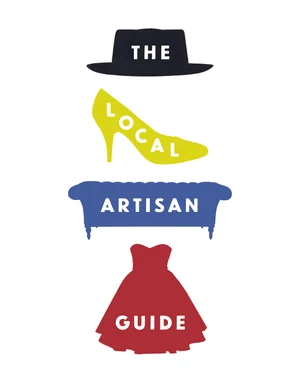In our modern day, first world society we as a post-industrial population are so removed from the sources of our most basic needs that we have become completely not capable of surviving on our own. In the last few years many documentaries and books have come out detailing where our foods come from and the eye opening often scary journey to our table. Now the same movement is occurring in fashion in which many are shining a light on where and who makes our clothing, shoes and accessories.
#whomademyclothes
As a former production manager for retail fashion, I’ve traveled all over the world visiting the factories where the product I was overseeing was being manufactured. I was fortunate to work for companies that were socially compliant however that did not erase my thoughts on how the lifestyle of the workers half a world away from me went about their six day work week and their day to day life. It usually involved living far from home in small dorms, long days mostly standing on their feet working on machinery, doing tedious, receptive work for low wages, little time off and not much room for growth. It takes a special mindset to do this work and most U.S. citizens would not find this attractive for the same reason why the United States has trouble finding U.S. citizens to harvest our crops (a job usually reserved for migrant workers brave enough to risk getting deported).
Factory workers in China.
When Donald Trump says he will bring back the jobs to the United States, it is already too late for most industries as automation is the future. With fashion it would involved building a new infrastructure, purchasing expensive, complicated machinery, training and keeping a staff that would have to be competitive with the rest of the world and the low cost employment they provide. That shirt you pay $20 for would now be $80. In our fast food culture we have become used to a fast fashion business model for the past decades changing the purchasing patterns of fashion that our parents and grandparents did not have access to.
In honor of the Rana Plaza factory collapse, where 1,138 people were killed and many more injured on 24th April 2013, Fashion Revolutionary Week has been created with the hashtag #whomademyclothes to put a spotlight on the individual life of factory workers around the world and humanize your shopping experience.
Emergency workers rescuing survivors from the Rana Plaza factory collapse April 24th, 2013.
“Who Made My Clothes” encourages people worldwide to demand greater transparency, sustainability and ethics in the fashion supply chain. Fashion Revolution seeks to unite the fashion industry and ignite a revolution to change the way fashion is sourced, produced and purchased so what the world wears has been made in a safe, clean and fair way. More information on this organization can be found at www.fashionrevolution.org.
The Local Artisan Guide has been spotlighting local artisans, independent designers and small brands who provide a “Slow Fashion” experience, meaning they create a product that is meant to last not only your lifetime but hopefully for many generations to come. When you purchase from a local artisan you know who created your items and can rest assured knowing you are not contributing to a sweatshop environment where exploitation, safety issues, child labor and extremely low wages are a part of the factory’s worker daily life.
Artisan block printer working on John Robshaw Textiles.
So next time you are about to purchase an item ask yourself the following questions:
- Would I wear/use this item multiple times a month?
- Who made this particular item?
- Is it made well and are the materials biodegradable?
- What country did it originate from? Is it a fair trade and ethical source?
- Does this brand have transparency in their sourcing and production?
Our society is now dealing with the growing problem of land fills being overrun with clothing that is not decomposing as brands such as H&M, Zara, Gap Inc., etc. are creating products not made well enough to last with synthetic materials and fabrics that do not decompose. These remnants of fast fashion are the new “disposable diapers” of the 21st century and you can help by being a more conscious shopper whether by shopping brands that are more sustainable, upcycling your clothes, shopping for vintage pieces and keeping yourself just as informed as you would for your food. In the end it isn’t only you and factory workers who would benefit from shopping more ethically but everyone else and our planet.
So join us in using the hashtag #whomademyclothes when reviewing brands on social media to help create a safer, transparent and more sustainable environment for all.
By Natalie Rivera




